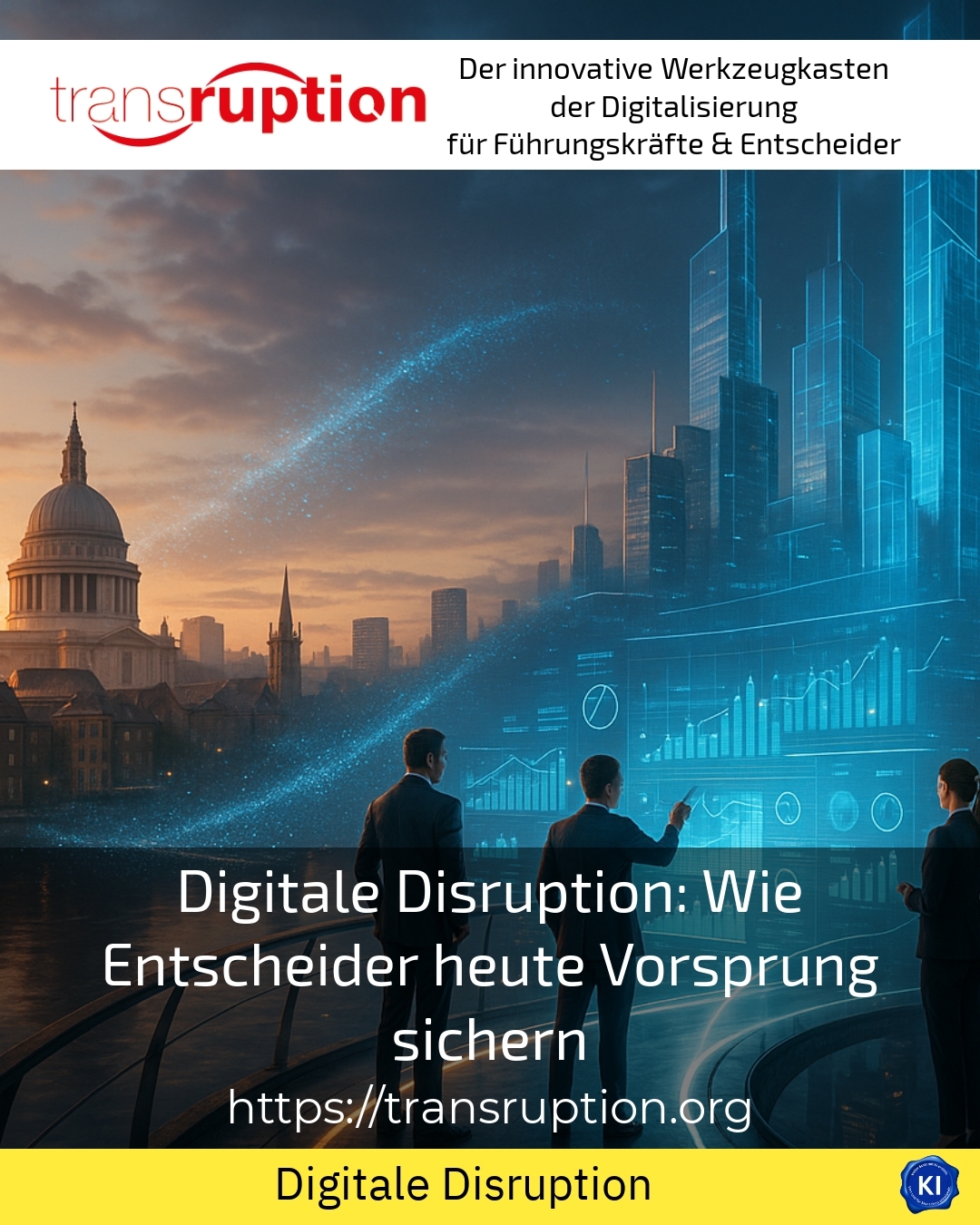Digital disruption characterises almost all industries today and presents managers with a major challenge. How decision-makers can stay ahead of the game is a question that is not only being discussed in the IT sector. The change brought about by digital technologies and innovative business models not only opens up risks, but also offers numerous opportunities for reorganisation and sustainable positioning in the market.
Digital disruption - basics and effects on decision-makers
Digital disruption describes processes in which established products, services or business models are fundamentally changed or displaced by new digital technologies or innovative concepts. Classic examples include industry giants such as Uber, which is challenging taxi companies with platform solutions, or Airbnb, which is revolutionising the hotel market by offering private accommodation. Even the media industry has experienced a fundamental upheaval thanks to streaming services such as Netflix. Decision-makers need to understand these dynamics in order to formulate strategic responses in good time.
In practice, similar patterns often emerge: new technologies offer customers a better user experience, lower costs or more flexibility. For managers, this means not resting on their laurels but actively questioning processes and utilising the potential of digital innovation.
Examples from different industries
The retail sector is a classic field of digital disruption. Amazon, for example, has challenged traditional retail shops with its online marketplace model. The convenience, wide variety of products and fast delivery have led to a profound structural change. A similar trend can be seen in mobility, where digital platforms for ride-sharing are replacing traditional taxi companies.
Fintech start-ups are driving change in the financial sector by offering uncomplicated, mobile solutions for payment transactions and investments. Companies such as Revolut and Robinhood have challenged the conventional and tapped into new customer groups. Smart networking solutions such as the Internet of Things (IoT) are also setting new standards for efficiency and transparency in industry.
BEST PRACTICE at the customer (name concealed due to NDA contract): In a medium-sized manufacturing company, the traditional sales process was replaced by a digital platform. This gave customers direct access to product configurations and orders. The resulting transparency and speed led to a significant increase in sales and improved customer loyalty.
Recognising digital disruption as an opportunity and securing a lead
Decision-makers today are faced with the task of understanding digital disruption not as a threat, but as a driver. This requires an open attitude towards change and a strategic focus on innovative technologies. Early identification of disruptive trends is therefore essential.
Practical tips for supporting such projects include
- Systematic analysis of your own business model with regard to digital weaknesses and opportunities.
- Building an interdisciplinary team that can react flexibly to new technologies.
- Promoting a culture of innovation that supports experimentation and learning from mistakes.
- Close dialogue with start-ups and technology partners in order to benefit from external knowledge.
- Implementation of agile methods in order to be able to adapt more quickly.
Industry examples to accompany disruption processes
In the automotive industry, Tesla is enabling a sustainable reorientation of mobility through electric and autonomous vehicles. Traditional manufacturers who do not proactively accompany this development run the risk of losing market share. In the communications sector, Slack has replaced established email traffic with a centralised, digital platform, which improves efficiency and teamwork.
Digital solutions such as AI-supported diagnostics are being used in the healthcare sector to supplement medical expertise and speed up processes. This creates scope for more effective patient care.
BEST PRACTICE at the customer (name concealed due to NDA contract): A service provider in the logistics sector integrated an IoT-based tracking system. This increased transparency in the supply chain and provided customers with real-time information on the status of their goods. This helped to increase trust and secure competitive advantages in a highly competitive market.
Digital disruption - successful support and sustainable competitiveness
Digital disruption requires decision-makers to be highly adaptable and have a clear vision for digital change. It is not enough to introduce individual technologies; the focus must be on transforming the entire business model. Continuous evaluation of market developments and close involvement of all stakeholders are essential success factors.
Managers who manage to align their organisations in an agile way and strategically promote digital innovations can achieve sustainable benefits. Partnerships with innovative start-ups, the use of disruptive technologies such as artificial intelligence, cloud computing or blockchain and the promotion of digital skills will strengthen future competitiveness.
BEST PRACTICE for the customer (name concealed due to NDA contract): In a traditional retail company, a strategic shift towards e-commerce and the introduction of data-driven marketing tools resulted in a complete leap in sales. Supporting this project ensured that the employees were involved and that the culture of change was deeply anchored.
My analysis
Digital disruption is not a temporary phenomenon, but describes a lasting transformation with far-reaching consequences. Decision-makers who shape from the outset instead of just reacting can secure a significant head start. This requires the targeted use of digital technologies and the promotion of innovation processes. Support that takes both strategic and cultural aspects into account is critical to success. Practical examples show that careful planning, the courage to break new ground and openness to external stimuli often lead to sustainable success and differentiation in the market.
Further links from the text above:
[1] Digital disruption - IT professional
[3] Digital disruption and megatrends - Maximum Digital
[5] Digital disruption - Glossary Morgen Beratung
[7] Digital disruption: How you as a decision-maker can now ... - Sauldie
[10] Disruptive Innovation - Companisto Glossary
For more information and if you have any questions, please contact Contact us or read more blog posts on the topic TRANSRUPTION here.
















